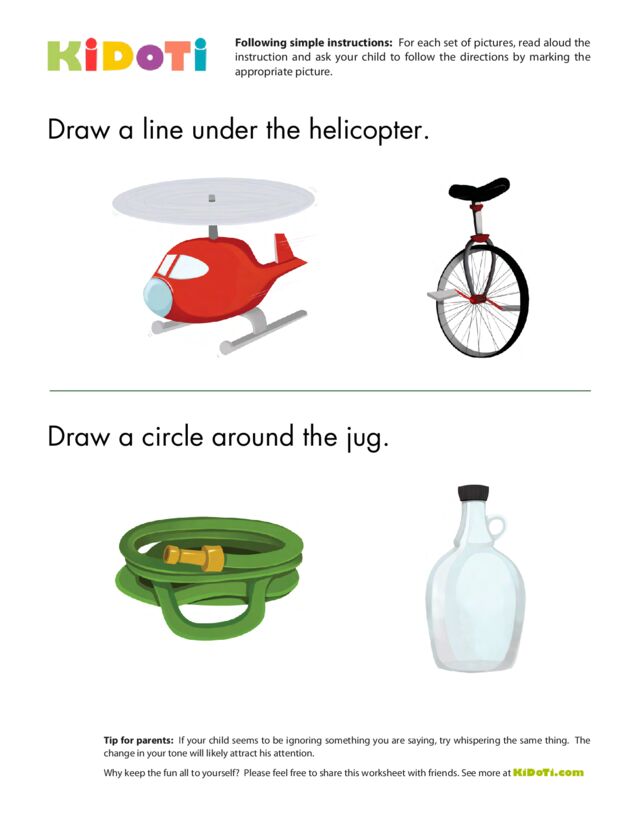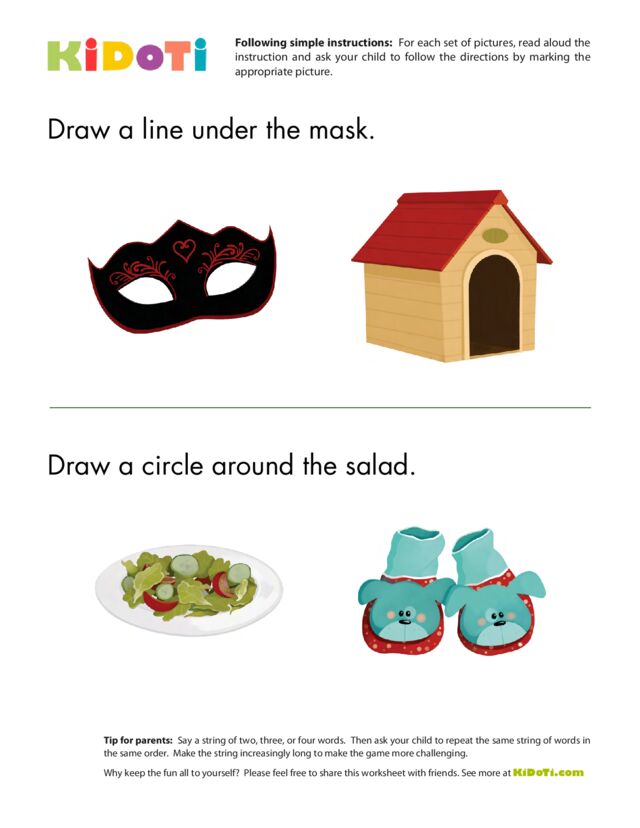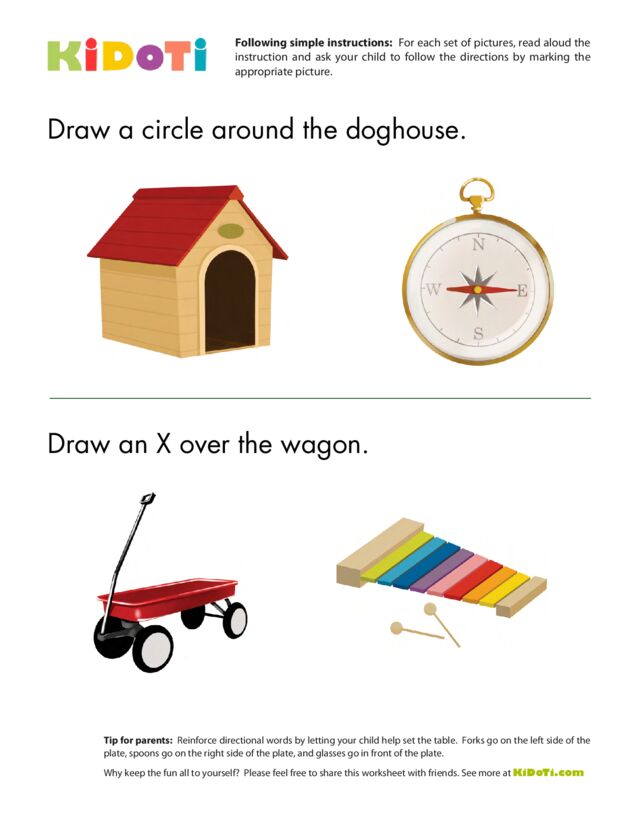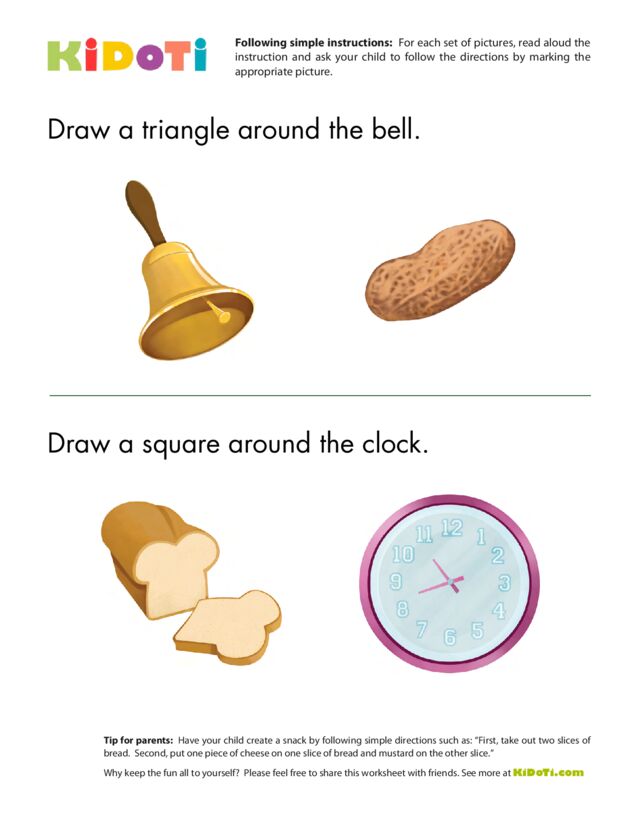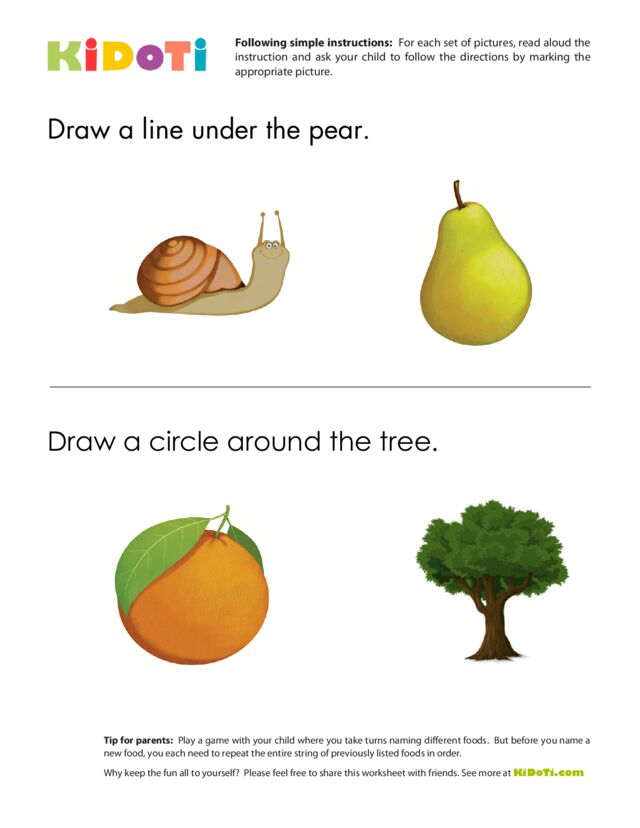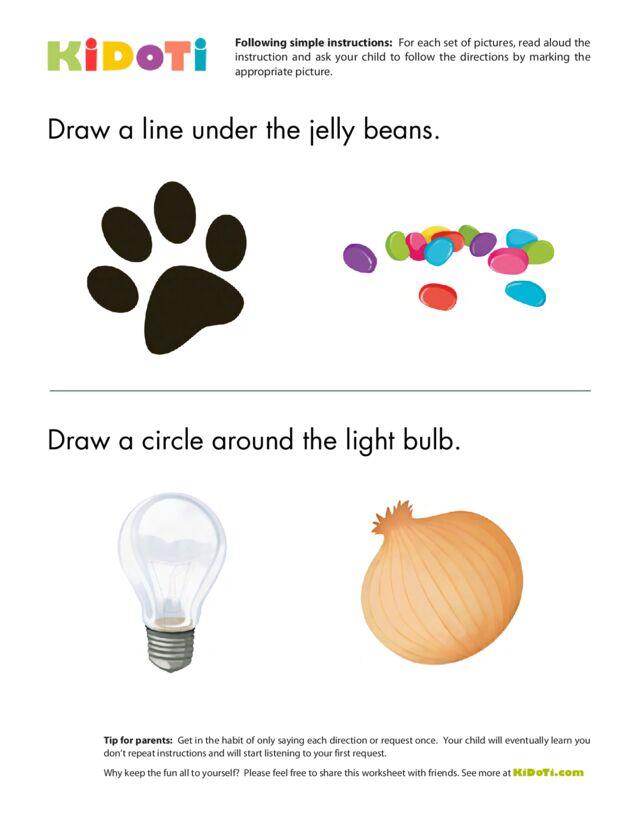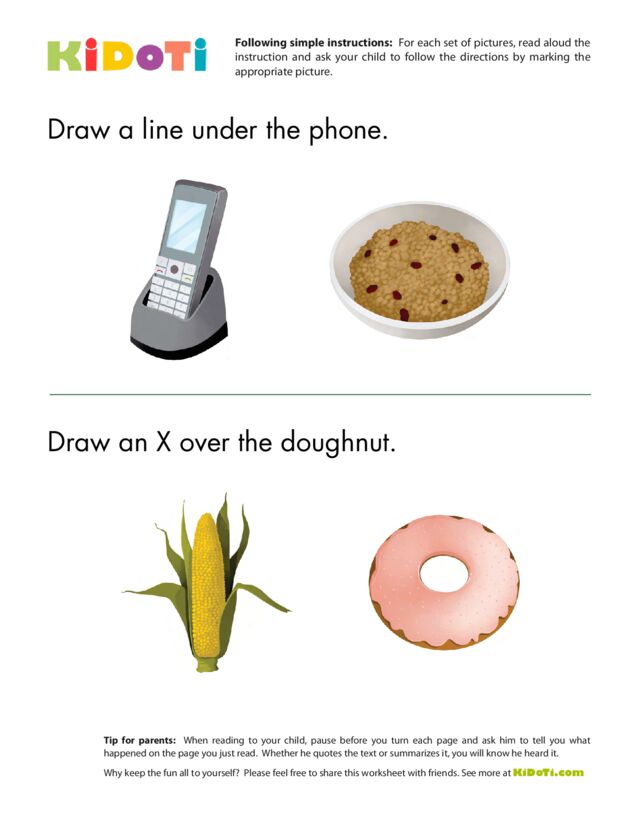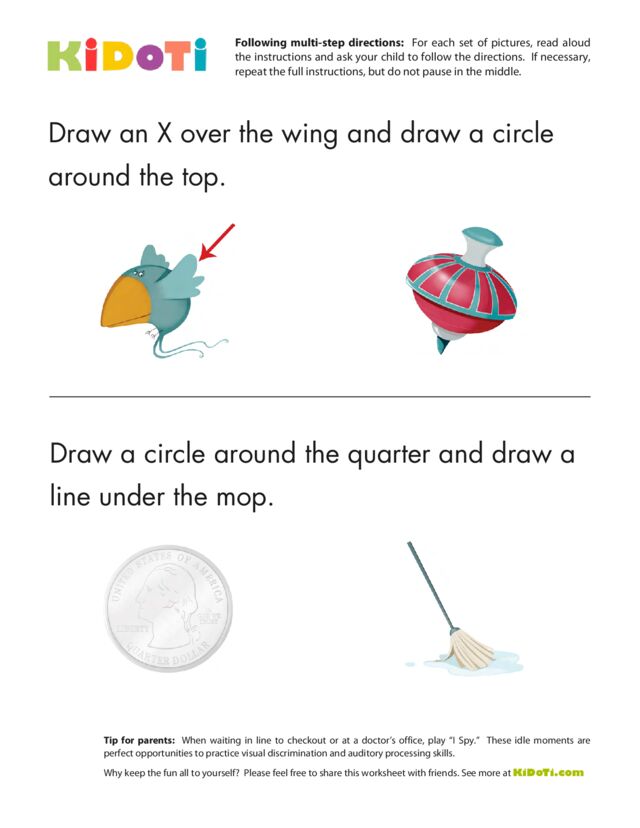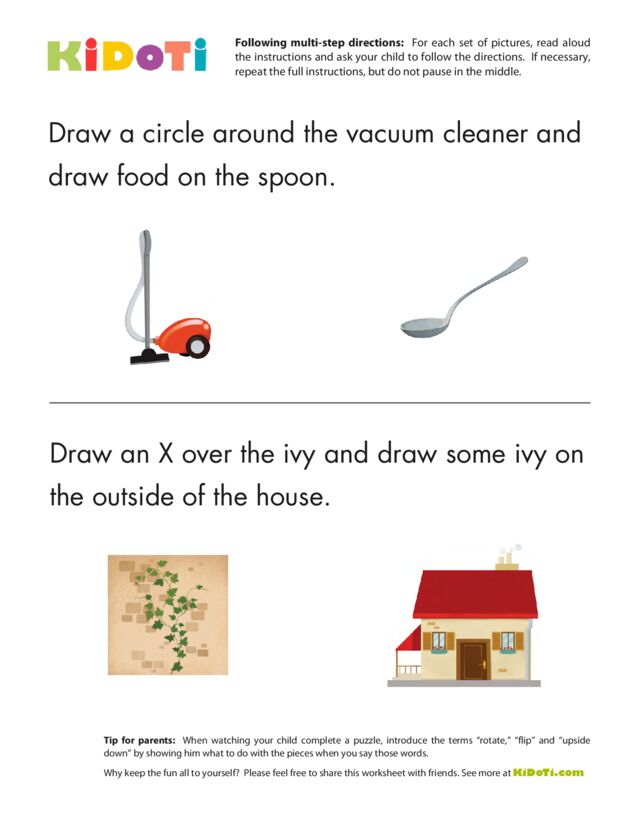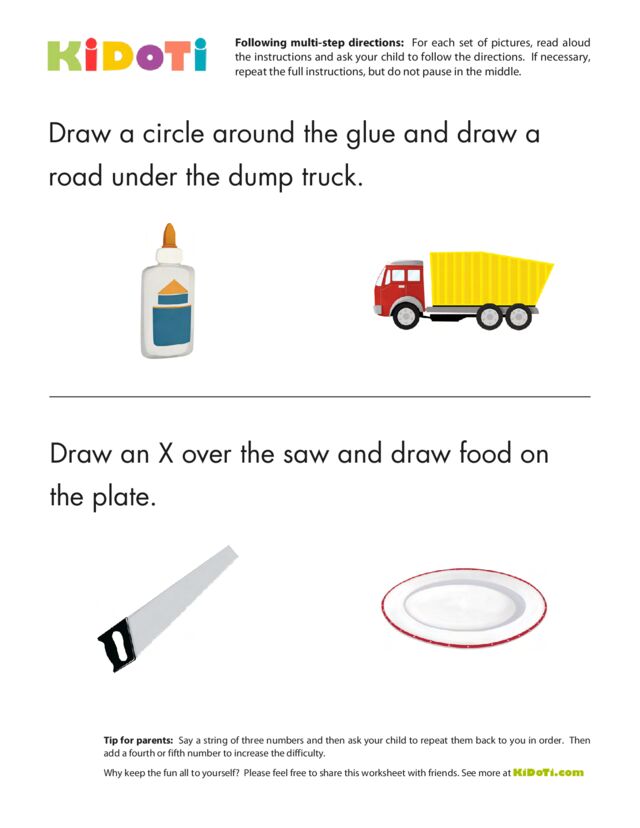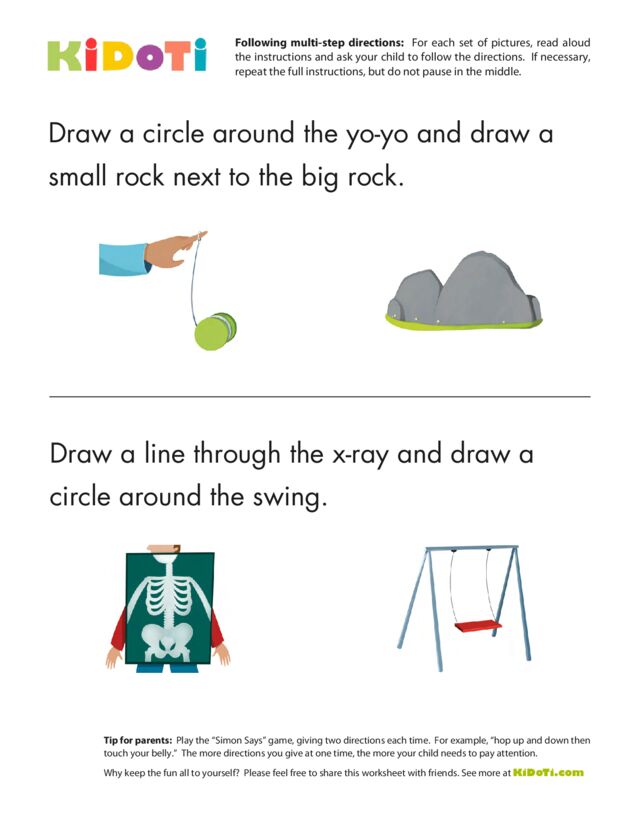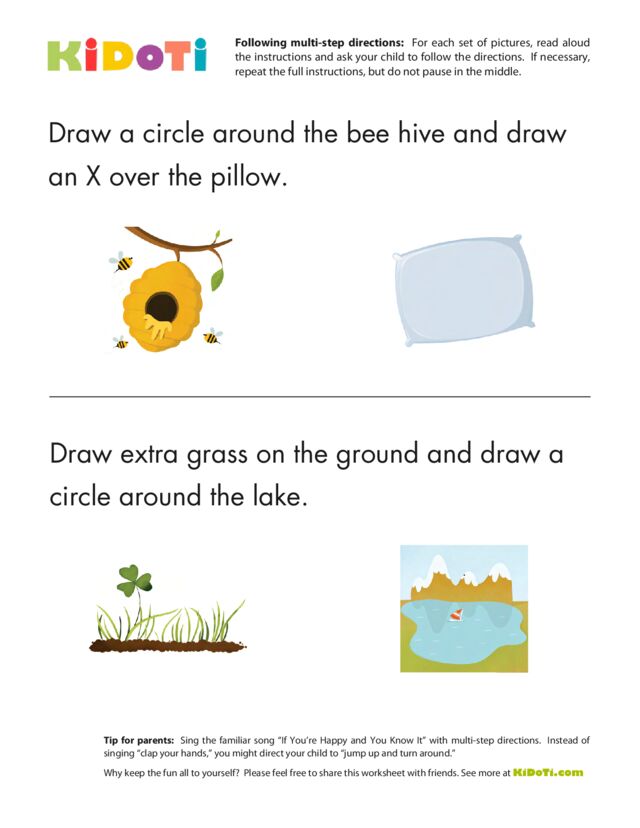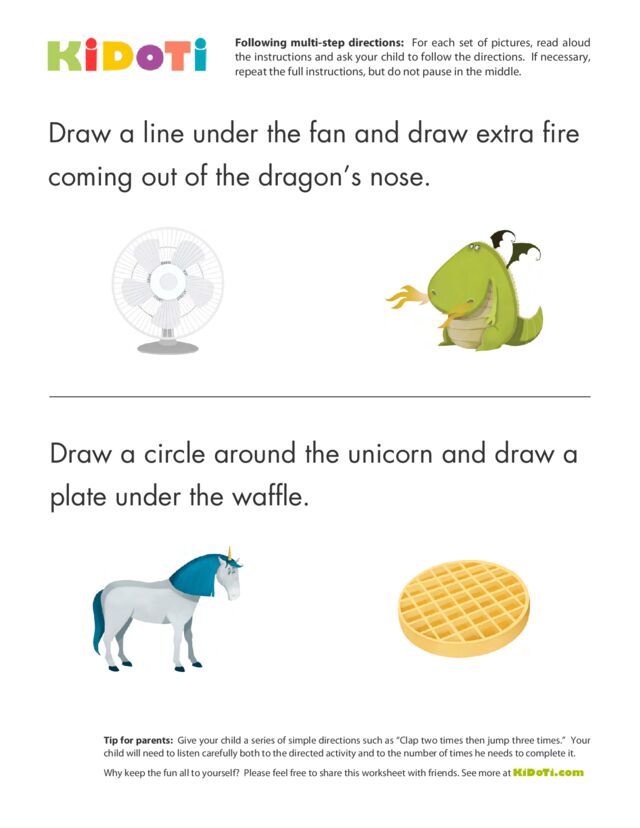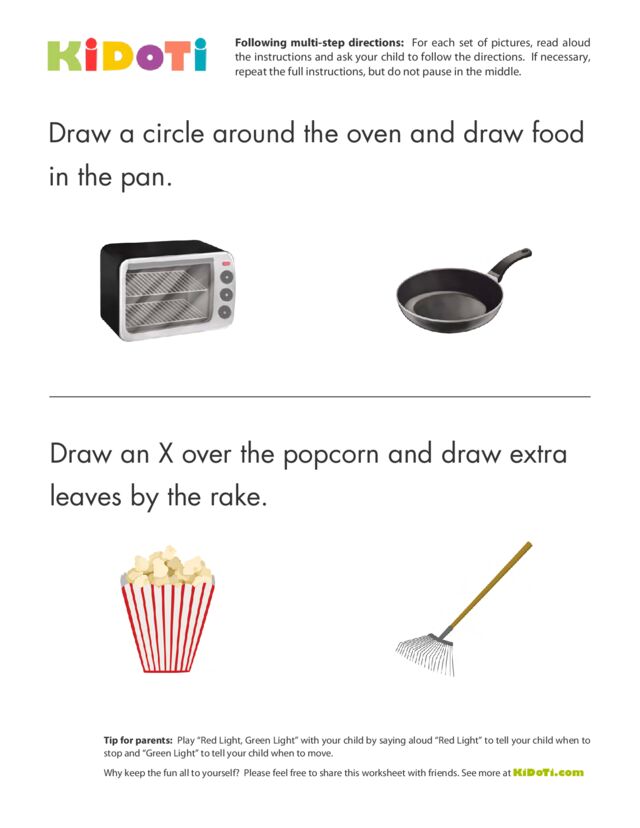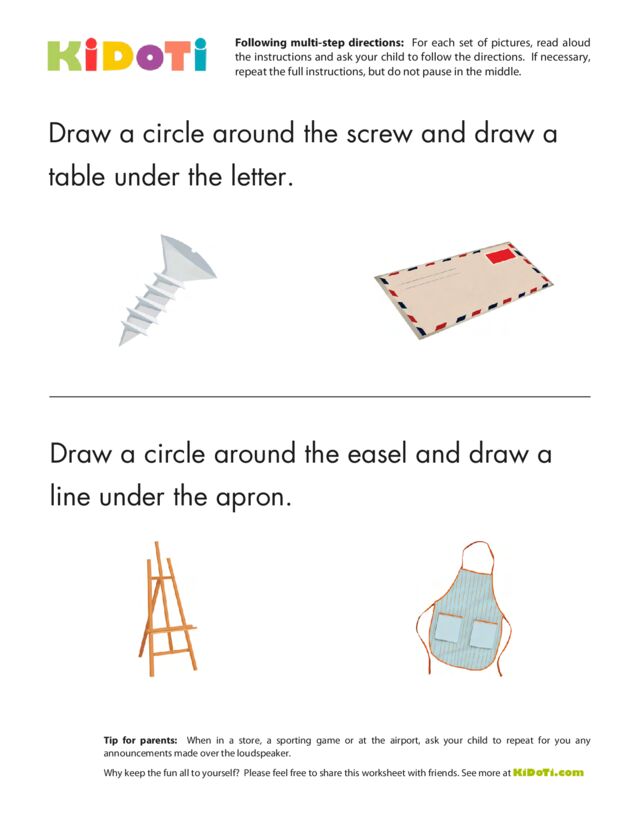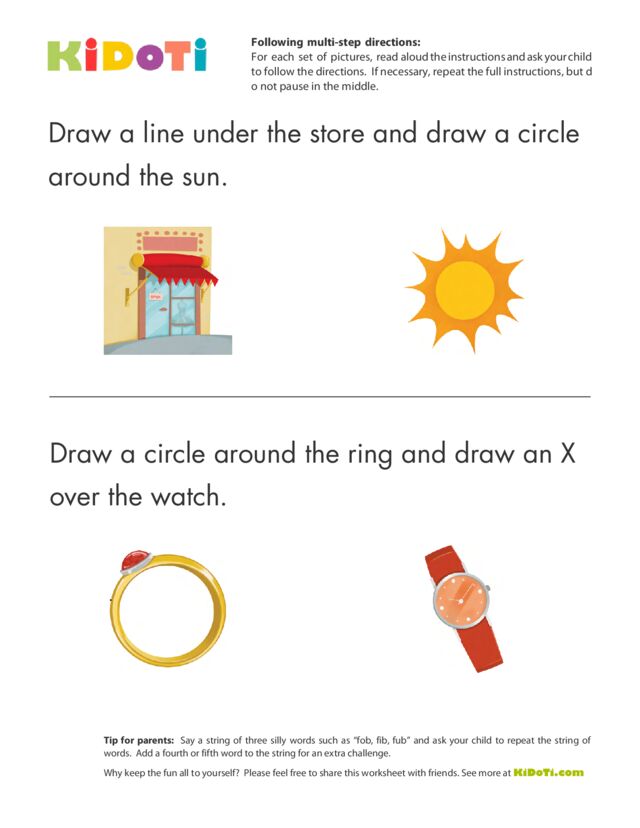Children learn to be great listeners by repeatedly practicing their listening skills.The following worksheets will give your child an opportunity to practice following simple verbal instructions and strengthen his listening skills. These following directions worksheets also reinforce the important positional terms “right,” “left,” and “in between.” Once your child is comfortable with these worksheets, consider introducing him to following multi-step directions worksheets.
The importance of following directions
A large portion of each school day is teacher-directed, meaning teachers give directions for how children should complete an activity or where children should go next. Children who are adept at listening to, understanding, and following directions will feel comfortable and confident in the classroom.
Following directions is a key element of successful social interaction with peers as well. Children exchange ideas and direct each other continually when playing and working together. When a child is able to listen to others and understand the meaning of their words, unnecessary conflict can be avoided.
Finally, the ability to follow directions translates to smooth relationships at home. While having opportunities to make decisions and follow their own instincts is important, the fact is that young children often need to be guided by adults to ensure their health and safety. For that reason, harmonious family relationships often depend on a child’s ability to follow directions.
Extra tips for using a following directions worksheet
When you introduce the following directions worksheets to your child, let him know that each worksheet has a fun game that is all about listening and following directions. Explain that you will be reading the sentences on the page one time and then it is his challenge to listen to what you said and follow the directions.
Before you read the directions on each worksheet, engage your child’s attention by asking him to point to the pictures on the page and name them. You can also use this time to answer any questions he has that may be directly or indirectly related to the worksheet or the pictures on the worksheet (such as explaining what a particular picture is or discussing all the different colored birds he knows, for example). By answering his questions at the beginning, before you begin working on the following directions worksheets, you can make sure your child is not distracted once you begin working.
Activity suggestions to supplement work on a following directions worksheet
- To practice following directions, have you child create a snack by following simple directions such as “First take out two slices of bread. Second put one piece of cheese on one slice of bread and mustard on the other slice.” Say each direction and then pause long enough for him to complete it before saying the next direction.
- Using an ordinary coloring book, ask your child to follow simple directions such as, “Put red dots on the boy’s shirt,” or “color the girl’s hair brown,” for example. Take turns and challenge him to give you one-step directions for you to follow when coloring.
- Play a game with your child where you take turns naming different foods by saying “I like pickles” or “I want to eat a cookie.” But before you name a new food, you each need to repeat the food the other person just said. Just like following directions, your child will need to listen carefully to your full sentence so he can accurately repeat each word in your sentence before saying his own sentence about food.
- When giving your child a direction such as “get dressed” or “finish breakfast,” break it into smaller steps that each includes only one direction. For example, instead of saying “get dressed,” ask him to “put on your pants.” When his pants are on, ask him to “put on his shirt.” Breaking an activity up into single directions will make it easier for your child to follow the directions and achieve the ultimate goal.
- When reading a short story to your child (such as a board book that only has one sentence on each page), pause before you turn each page and ask your child to tell you what happened on the page you just read. Whether he quotes the text directly or summarizes it, you will know he heard it.
- Instead of walking to the car or bus stop, ask your child to “hop like a frog,” “skip” or “hop on one foot.” Without reminding him again, once you get outside, challenge him to remember what you said and follow the direction by moving in the specified way.
- When watching your child complete a puzzle, introduce the terms “rotate,” “flip” and “upside down” by showing him what to do with the pieces when you say those words. Knowing what these words mean will make it easier for him to follow directions given to him by a teacher or other person. Also, use positional words when possible. For example, “Please put the book on the table and the ball in the basket” instead of, “Please put the book and the ball away.”
- Use the terms “right” and “left” whenever possible to reinforce those concepts. For example, tell your child to give you his right arm when dressing instead of simply pulling his arm through a sleeve. You can also reinforce directional words by letting your child help set the table. Forks go on the left side of the plate, spoons go on the right side of the plate, and glasses go above the plate. Or, play a game where you say “right” or “left” and your child can choose whether to lift the corresponding hand or foot up in the air. Then switch roles and let your child call out the word “left” or “right” and make sure you are raising the correct hand. As with knowing positional words like “rotate,” “flip” and “upside down,” knowing what the terms “right” and “left” mean will help him follow directions.
